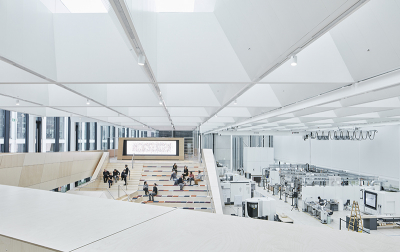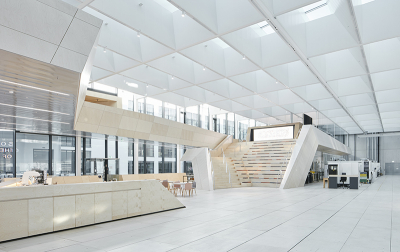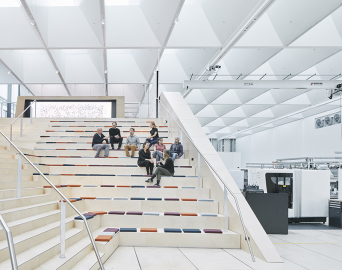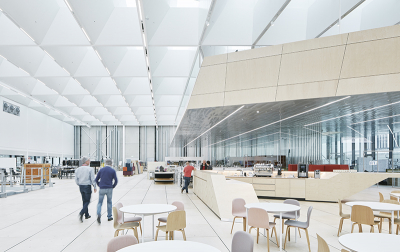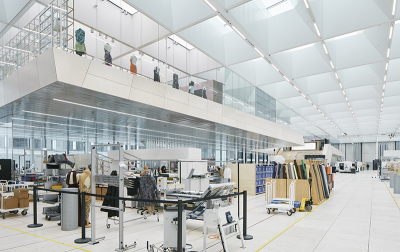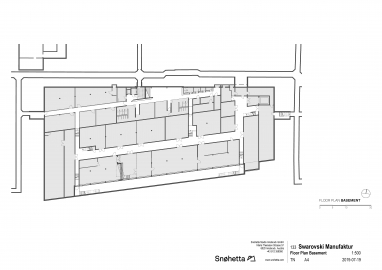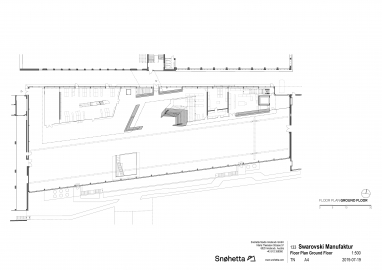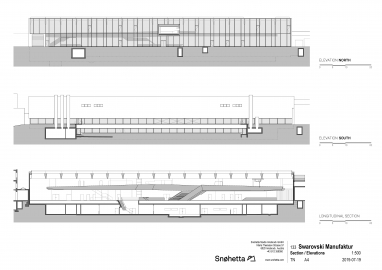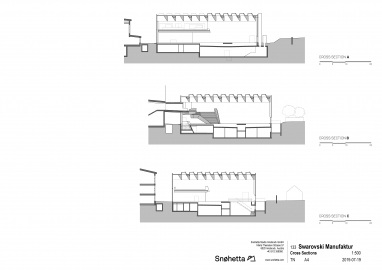Swarovski Manufaktur
Swarovski Manufaktur – the Crystal Atelier of the 21st Century
With the Swarovski Manufaktur, Snøhetta has created a crystal workshop for the 21st century. This daylight-flooded and generous building is as much a top-notch production facility as it is an innovative creative hub for co-creation and collaboration providing Swarovski with new opportunities to work together internally and with customers.
The building is designed to facilitate innovative co-creation and collaborations, creative exchange and a rapid implementation of ideas. It was built on the site of a former warehouse at Swarovski´s factory premises. The design focuses on creating an appealing and stimulating space that encourages creativity rather than focusing on the physical production processes which are also a central part of the Manufaktur. It further focuses on what makes crystal so special and attractive, and uses these ephemeral qualities to create a specific atmosphere. The space has an incredible amount of daylight penetration which is unparalleled in the typical production facility context. Crystals only come to life with light, so the intense presence of that daylight is the most important aesthetic aspect of this building.
With Swarovski Manufaktur, Snøhetta created a new typology of workspaces. The architectural and spatial solution fits the purpose requirements set out by Swarovski. Snøhetta clearly understood the vision that Swarovski had for Manufaktur, developed it further together with the client and realized it through a clear design strategy. Manufaktur is a space dedicated to co-creation and innovation, a work environment set to encourage creativity. The building sets new standards for inclusive production facilities, bringing clients, designers, artists, researchers, craftsmen, machine operators and technicians together in one place. The building facilitates new ways of interacting between employees, clients and the general public. The entire production process is replicated under one roof on a small scale to enable faster production in smaller quantities, and closer interaction between the client and design-and production teams. The daylight-flooded, generous and flexible space serves the needs of the company and can adapt to unknown future requirements. The project has the potential to change how we think about and interact with workspaces in the future.

